The Ultimate Ladin Fairytale: Berghotel Ladinia
The Alpine mountain hut of your dreams, plus hiking, rifugios, and other Tyrolean traditions of the Dolomiti
THE LADIN MOUNTAIN HUT OF YOUR DREAMS
I just returned from a week of intense hiking and disconnecting in the Dolomites. Our home base was the Berghotel Ladinia, a folksy little mountain inn where red alpine geraniums spill from window boxes; armoires and doors are hand-painted in traditional Ladin patterns; and everyone who works there wears traditional dress, including the owner, who regularly stops by on his modified Segway wearing very well-worn lederhosen to chat up the guests. If this all sounds like a set for the next Wes Anderson film, know that the aesthetic is distinctly original to this special corner of the world (minus the Segway), and the experience of staying here, especially for more than a couple days, feels like slipping back into the simple past.
The first-ever mountain inn to open in Corvara (1930), its authenticity is legit—with a cheeky enough vibe to avoid feeling like a living history museum. With only 13 snug, pine-clad rooms, the building itself has been tenderly and authentically preserved: original wooden doors with time-worn Ladin designs; glass-blown pendants hanging at a tilt, the frilly edges mimicking a crinkled linen shade; creaky floors and even creakier stairs; Tyrolean chairs and blue gingham drapes. Much of it looks like it’s been here since the day it opened—which is not a complaint, but an aesthetic marvel: “Look world, we’ve been here for 100 years, and we still do the job!” In a world of ballooning, ridiculous hotel amenities, this place is a staunch outlier, clinging to its heritage with a devout fastidiousness. Don’t even think about ordering an Aperol spritz (it’s a multinational corporation!); instead, Alessio will prepare a special Tyrolean spritz with some esoteric local bitters made in the mountains. It will not be as red as the geraniums, but it will be delicious.
If you want a spa, pool or Michelin starred restaurant, their upmarket sister property La Perla right across the street delivers in spades. But at Ladinia, the appeal is its simplicity. You have everything you need for the Dolomites—a comfy bed, a beautiful view, and sustenance (although, to be clear, the food goes above and beyond mere mountain-climbing calories). This simple formula forces you to appreciate why you’re there in the first place. And lest you forget, fling open the window and there’s Sassongher mountain.
Breakfast is served in the front dining room, preparing hikers, climbers (and skiers in winter) for full, demanding days in the mountains of the Alta Badia. A hearty snack in the late afternoon with a pitcher of elderflower water for those lucky enough to make it back in time (we rarely did). Dinner is a cozy, candlelit affair with traditional dishes from local ingredients. We ate pork canderli (Tyrolean dumplings) on a bed of purple cabbage, handmade tagliolini with fermented lemon and mint, fried squash blossoms and “turtles” filled with ricotta, spinach and saurkraut. If you’ve paid for half-board (highly HIGHLY recommend), it’s included in your stay. Even though there’s an option to dine at one of La Perla’s fancier restaurants across the street, we ate every single dinner at Ladinia. In fact, we ate at the same table every single night and never tired of the experience —four courses, two changing menus. After long, exhausting days spent hiking in the surrounding mountains—and convinced the ultimate travel luxury is the elimination of unnecessary choices—we were immensely grateful to amble no farther than down a single set of creaky stairs for another perfect meal.
THE HIKING
Corvara is most known for being a ski town, which is a blessing, because it seems to attract less crowds in the summer for its equally fantastic hiking. I won’t pretend to give you specific hiking recommendations (there are between 700-1,000 routes you can reach from this location by foot), but I will promise you that the hikes we did here were every bit as spectacular as the ones you know by name. We came with a list of trails, peaks and formations in hand, all researched online (Seceda, Tre Cime di Lavaredo, Lago Di Braies), but thanks to the sensible, excellent advice from the staff at Ladinia, we ended up getting in our car only once all week. The effort of driving—usually involving terrifying mountain passes full of cyclists, motorcycles and hair-bending turns—plus the time to find parking and the annoyance of sharing the trail with crowds (they’ve all read the same blogs and seen the same IG posts as you!) is completely avoidable.
Our game plan every day: Pore over maps at breakfast to solidify our route for the day. Alessio, Francesco, Nicole, and Allesandra, who seem to do everything all at once—from bartending and serving meals to popping up behind the reception desk the very moment you need them—offer suggestions and alterations to your route. We tackled between 10-16 miles each day, so it was important to understand elevation gains, make sure the route is clear of weather (in June, the occasional trail is still blocked by ice or thigh-high snow), and identify a rifugio for lunch. The rifugios are a revelation: family-run mountain huts only reachable by foot with the express purpose of feeding and sheltering people (sometimes overnight) on the mountain. Add wildly incredible views and a convivial camaraderie. In my family, we’ve come to believe that if you are not organizing all your hikes around a rifugio, you are not doing it right.
A FEW HIGHLIGHTS:
—Take No. 11 to the highlands of the Munt de Fanes, where you’ll pass craggy peaks, alpine meadows, cows, wild horses, marmots, wildflowers, waterfalls, before stopping at Fanes Hut for lunch. Here, you can opt for the No. 12—a longer but gentler path (instead of back down the steep incline) dotted with a series of carved wood faces mounted on wooden poles, like mountain totems. They are strange, and we loved them.
—The Jimmi Hut, our favorite rifugio for a handful of reasons, including food so delicious we went twice, and the magnificent view.
—A connected double gondola ride up the Piz-Boe lift from Corvara (not for those with a fear of heights) for the surreal experience of being dropped off on the side of a mountain peak with not-yet-thawed glaciers in June. My kids threw snowballs.
FOR YOUR NOTES //
1. Getting there and getting around: We came by way of Zurich, but it would be much easier to fly into Milan. We rented a car, but you can get by without. There’s a four-hour train from Milan to Bolzano (or five hours from Rome), then catch a bus or hire a driver to get to Corvara. Once there, the free bus pass from the hotel and gondolas will get you everywhere you need to go. It took us a few days to realize we were wasting money on single-ride gondolas; it’s worth it to buy a pass. Theoretically, you could opt not to use the lifts, but I don’t recommend it. The all-day hikes are long and strenuous, and you don’t want to expend unnecessary effort simply getting out of the valley. There are six lifts operating in Corvara in the summertime, but you may come across other gondolas/lifts that connect to other towns.
2. The weather: It will probably rain. We went in June, and it rained at least once every day. Usually a drizzle for less than a half hour at a time, usually in the morning. Bring your raincoat on every hike, even the sky is full of sunshine when you head out.
3. Craft: Of the all the traditional Tyrolean craft we saw, most of which is related to vernacular architecture, my favorite are the traditional alpine dolls by Judith Sotriffer with hinged joints and sweet painted faces. Her studio sits at the entrance to historic (and a bit touristy) Ortisei, which is known for its long history of wood carving.
4. A note on price: Rooms at Berghotel Ladinia hover around $250-300/night (sometimes less depending on season; more during ski season). The almost unbelievable caveat: The price includes two beautiful meals each day: a full breakfast spread with homemade breads, cakes, pastries, jam, fruit, yogurt, eggs, and on and on; and dinner, which includes two four-course menus or an ala carte menu. In the United States, dinner alone can easily reach that price point, and the food, as I’ve already mentioned, is thoughtful, local, extraordinary.
5. Hotelier and owner Michil Costa (originally from Alta Badia) discusses his humanistic psychology-driven take on hospitality. “The world of hospitality is so beautiful because you have the opportunity to give joy and happiness to the person in front of you.”
6. What to read: I absolutely love Natalia Ginzburg’s memoir, Family Lexicon, which chronicles her Italian family’s rituals, linguistic family phrases, and their complicated lives as anti-fascists during Mussolini’s dictatorship. The tie-in here is her father Giuseppe Levi’s fanatic obsession with mountaineering. I didn’t make the connection while reading it a few months prior to our trip, but while there, thought about it many times, appreciating the insight into what the mountains once represented (and probably still do) to many northern Italians: the difficulty, the ruggedness, the self-sufficiency, and the freedom. Also, it’s just a really good book.
FROM THE ARCHIVE / Related Newsletters You Might Have Missed:
Hotel Waldhaus
Places to Stay in Italy with Heart
The Simple Pleasures of Salina
—Meghan McEwen


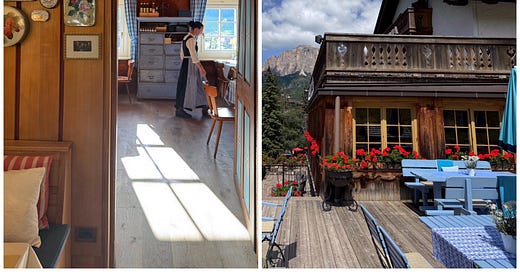


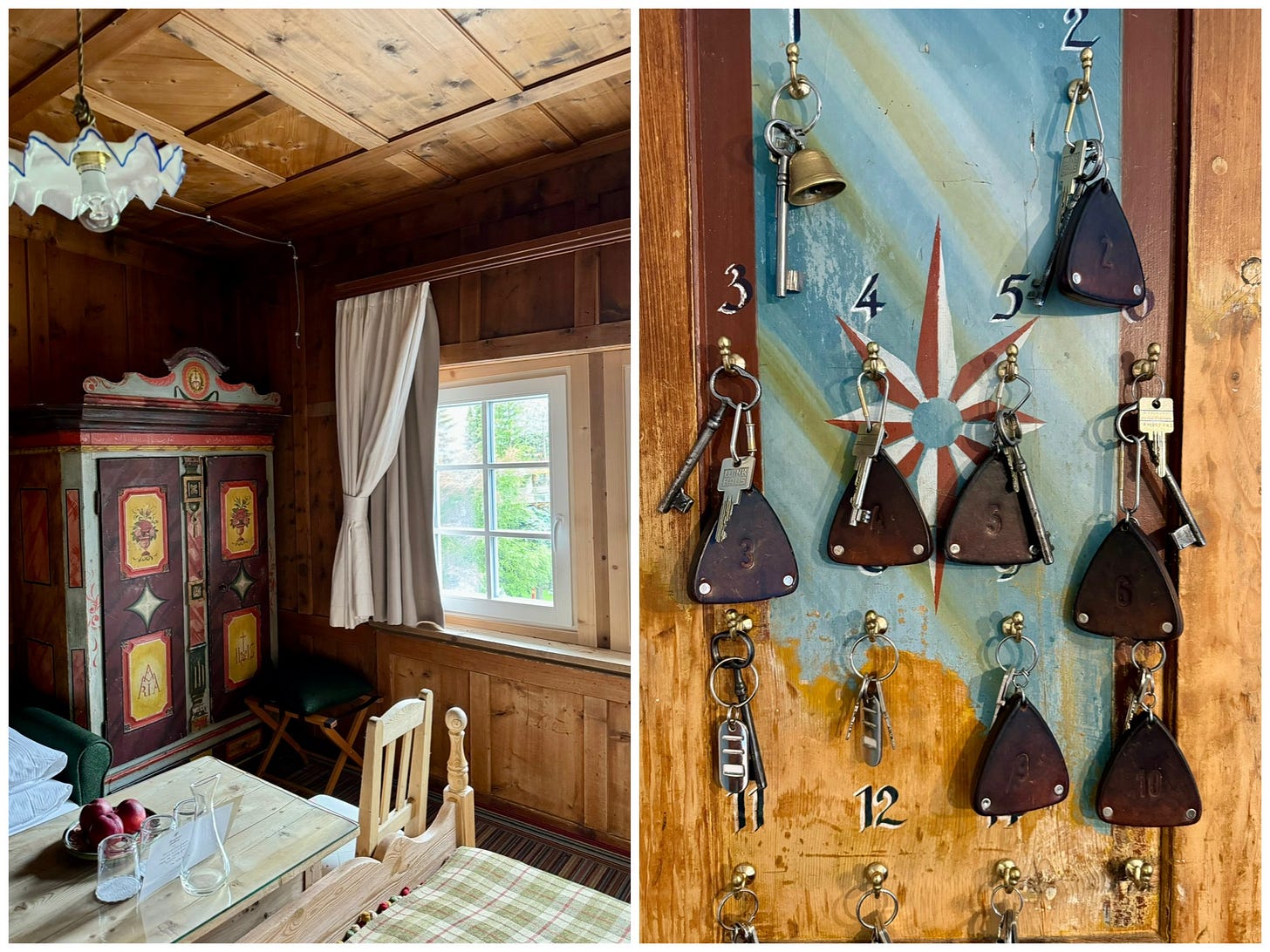
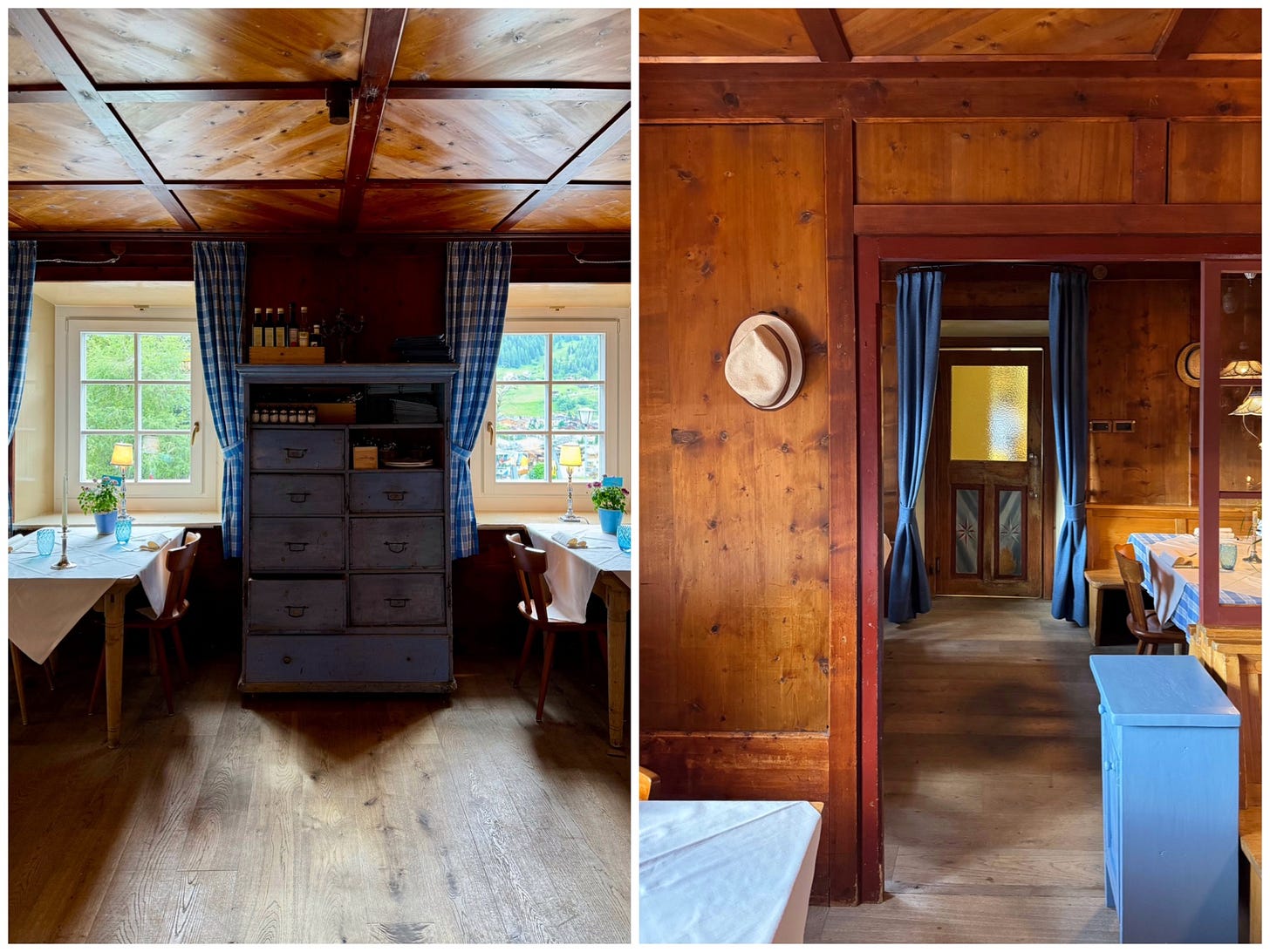
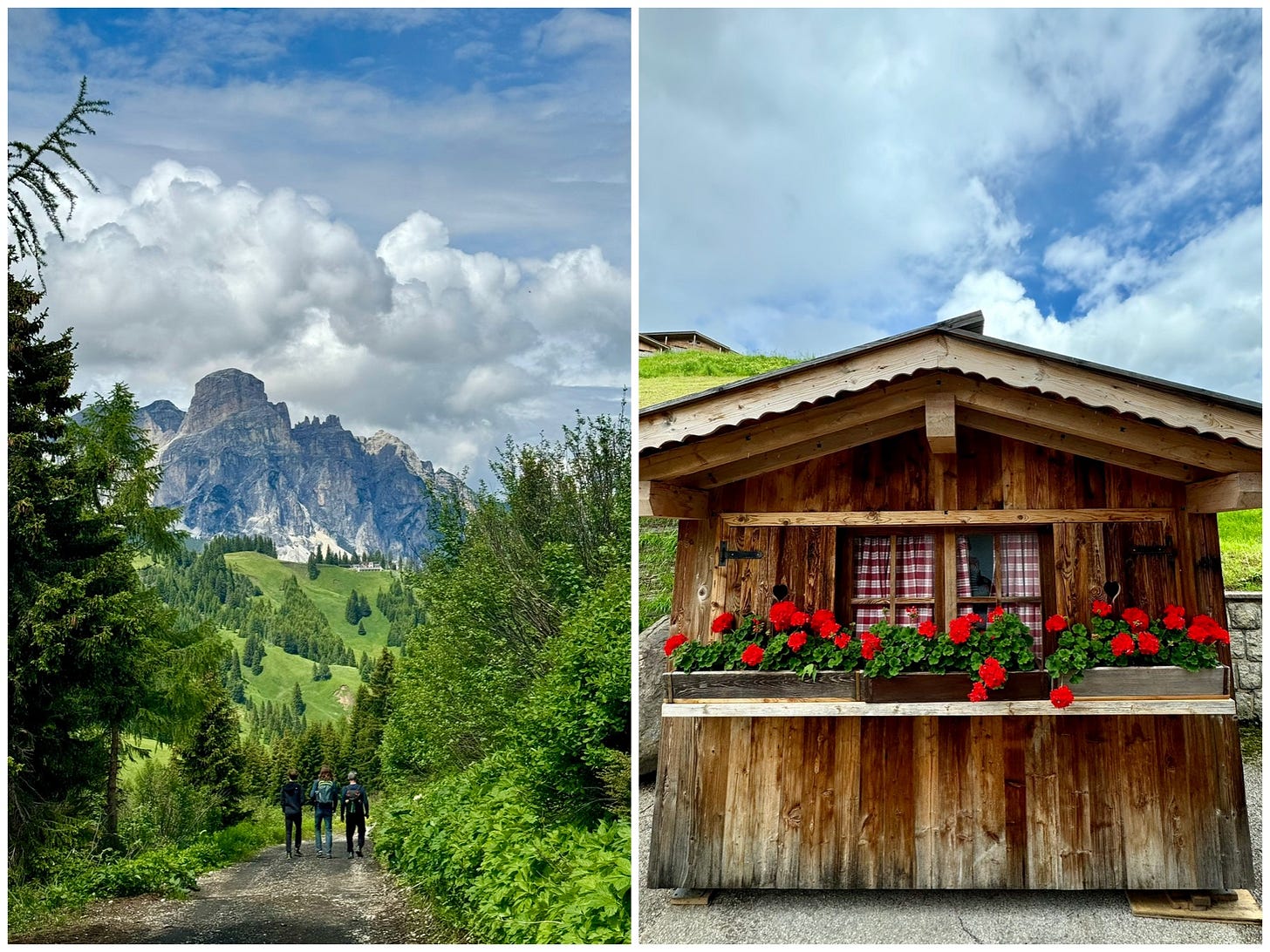
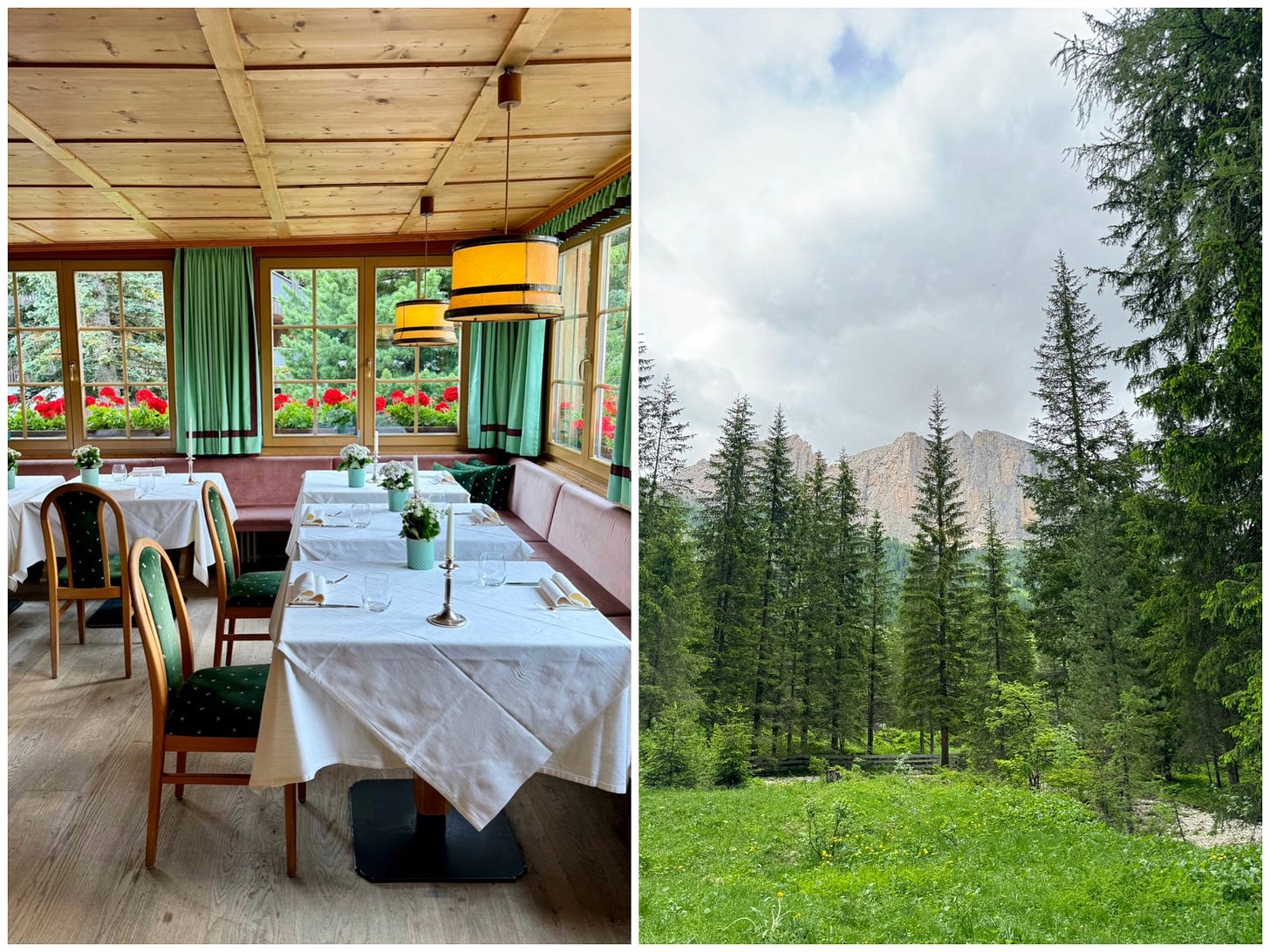
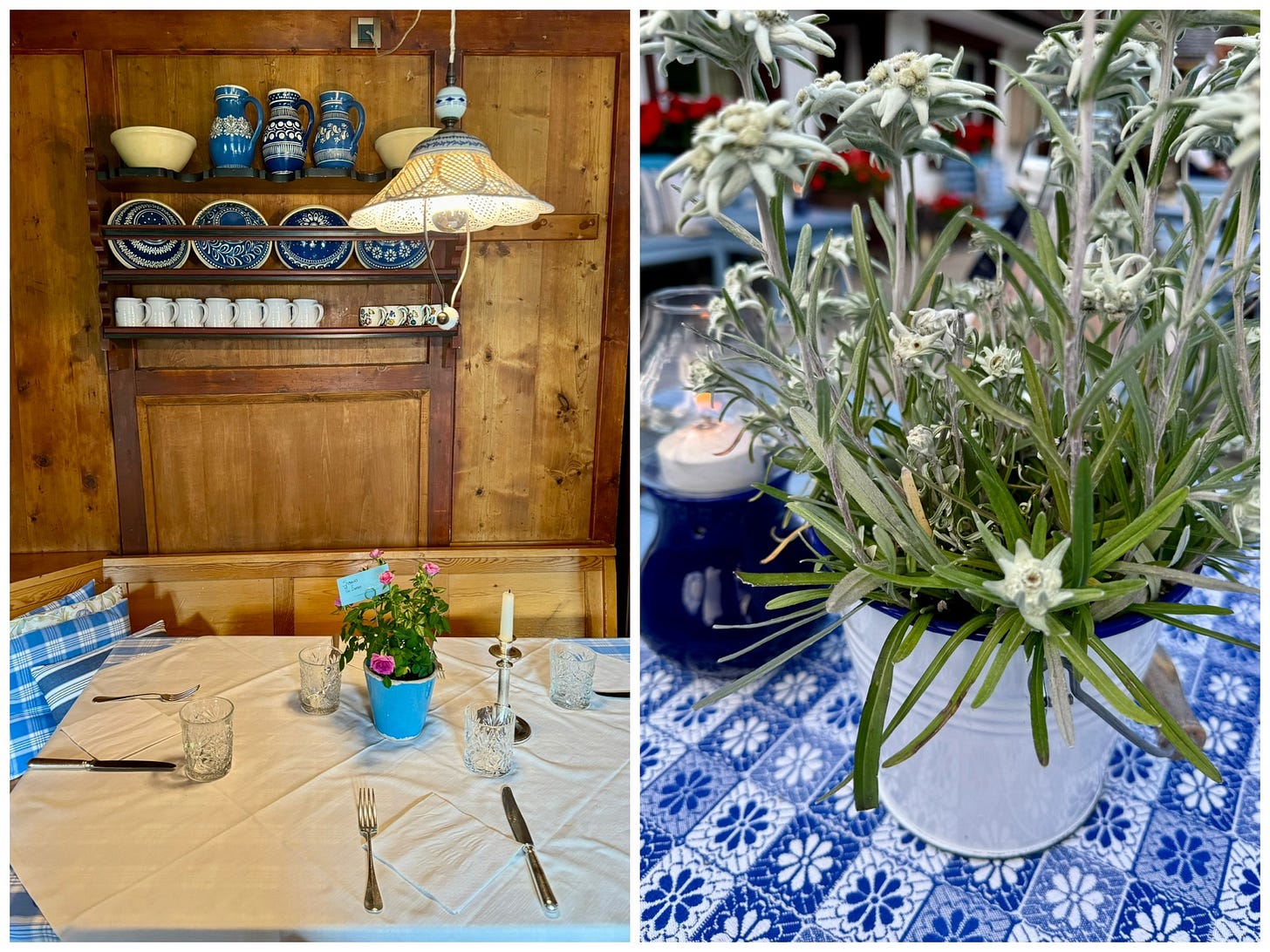
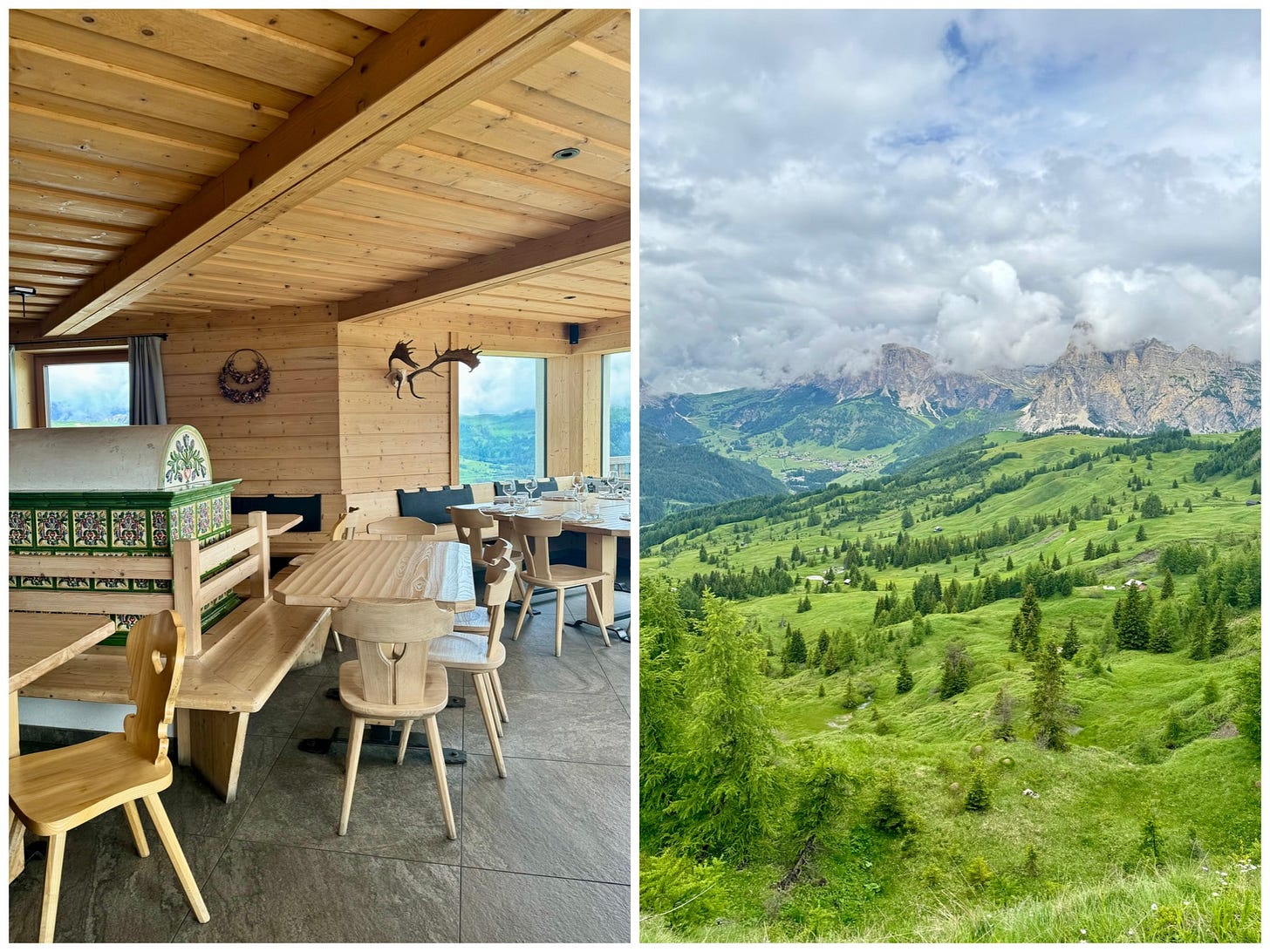
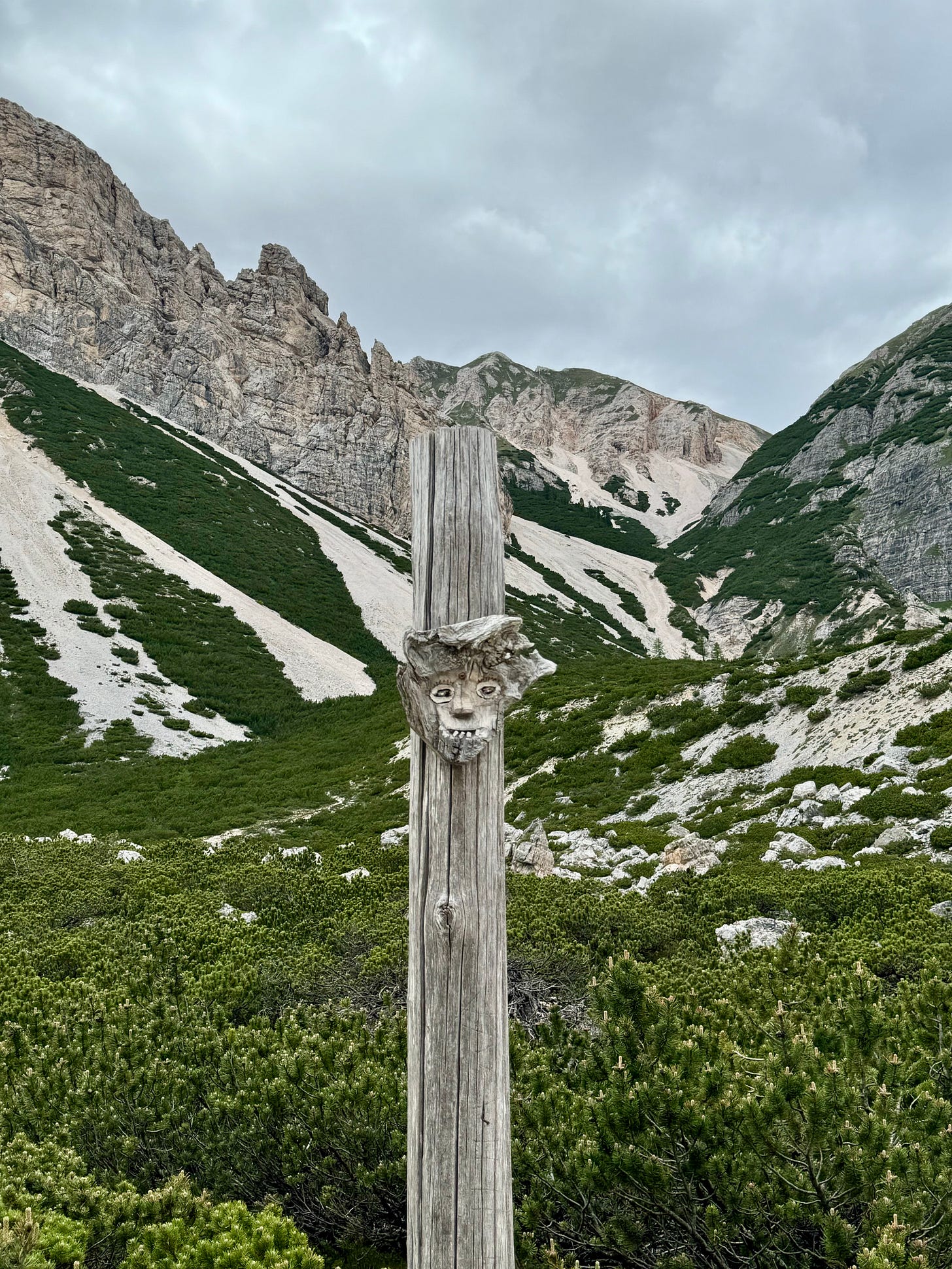
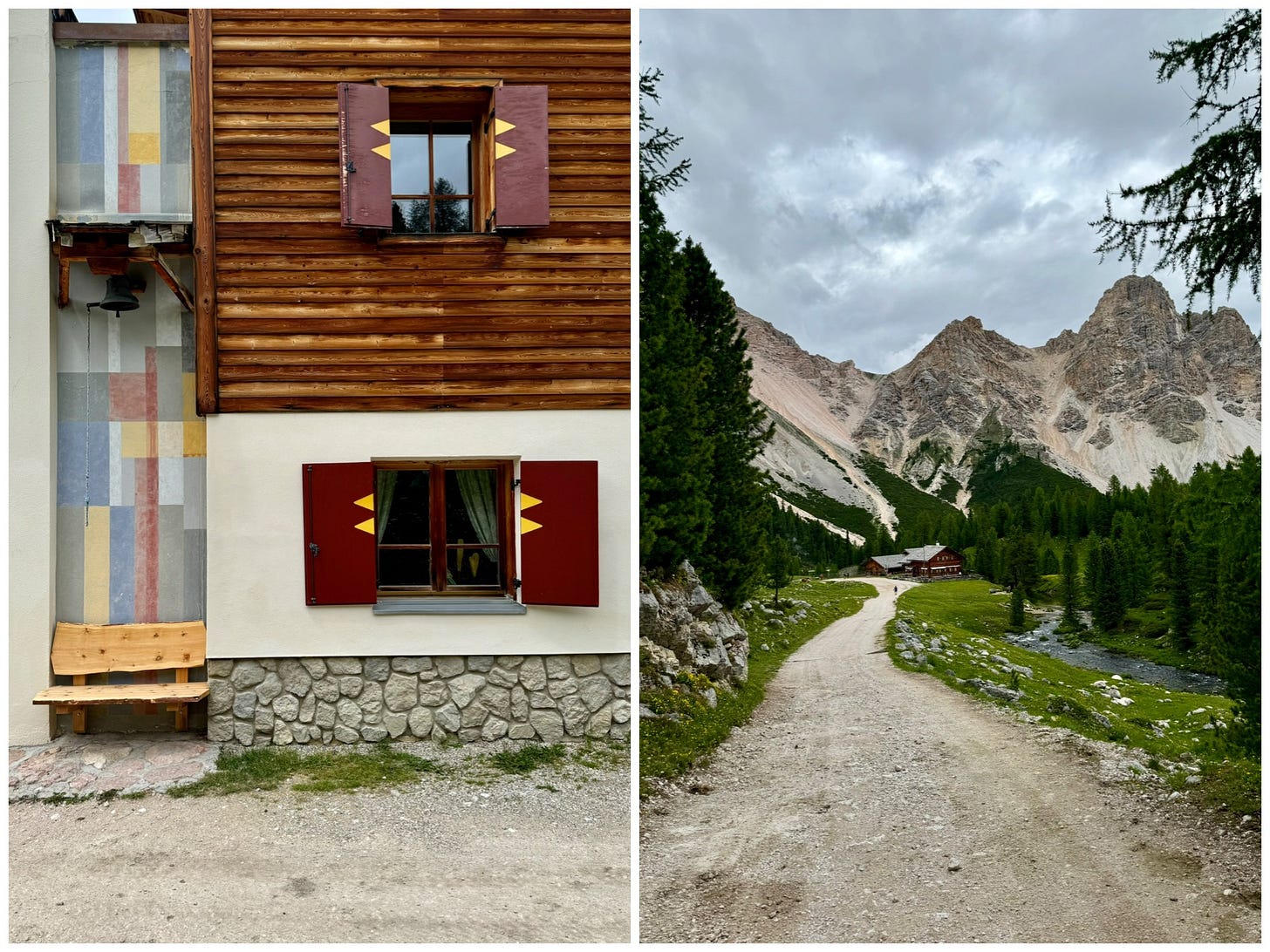
What a wonderful experience for all of you!! Love the pictures.